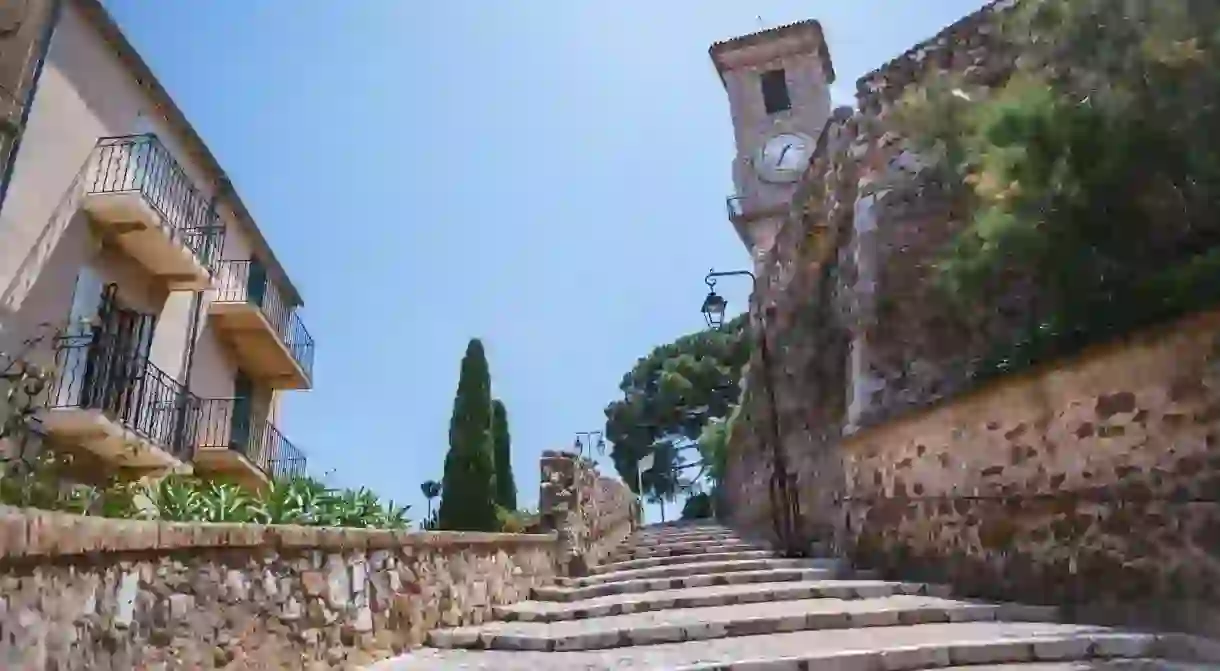A Brief History of Cannes Old Town, Le Suquet

Le Suquet is one of the oldest neighbourhoods in Cannes and dates back to Roman times. Starting on Cannes’ iconic boulevard, La Croisette, head west, pass the old port on your left and go up the windy, cobbled street of restaurants to reach this old quarter. At the top, you’ll find two of the best buildings to appreciate Cannes’ history: an old beautiful church and a castle. Here’s a brief history of Le Suquet – a must-see for any visitor.
Le Suquet sits at the top of the hill overlooking what is now Cannes. This was the original site of the town, which started out as a Roman camp. The Romans occupied the entire area for five centuries, including the small islands of Sainte-Marguerite and Saint-Honorat, which are just off the coast of Cannes. Many remains are still in evidence along this section of the coast, which the Romans fortified to defend themselves from attack.


By the 12th century, monks had taken over the entire area, including the neighbouring islands. They built a castle on top of the hill in Le Suquet, which is now known as the Musée de la Castre. Today, the medieval fortress houses an art collection donated by Baron Lycklama in 1877 and celebrates and cares for artefacts from the town’s past, such as 19th-century paintings. The Chapel of Sainte-Anne has a stunning view of the city and across the Bay of Cannes. From the top, you’ll be greeted with a 360-degree panorama – but be warned, there are 109 steps to climb.



In the 14th and 15th centuries, a church was built just under the old fortress, the Église Notre-Dame d’Espérance. It offers great views over the harbour and city and is now home to some wonderful sculptures and stained glass windows. It took over a century to build and work was only finished on the Renaissance bell tower in 1627.



Over 400 years ago, roads were laid out along the coast and, with such close proximity to the harbour, the fishermen began to build their homes here, fishing overnight to bring in the fresh catch for the town in the morning. When the British and Russians arrived to take winters here in the early 19th century, Cannes really only comprised the sleepy fishing village of Le Suquet. It was the visiting European millionaires who really built the city up and carved out its reputation for idyllic holidaying and wealthy lifestyles.



It is at the foot of the hill leading up to Le Suquet that the wonderful Marché Forville (Forville Market) can be found, along with the many restaurants that line the rue Saint-Antoine. This route is wonderful for a stroll and offers a historic breather from the hustle and bustle of the centre of Cannes. The area overlooks one of the most famous walkways in the world – La Croisette, where movie stars run the gauntlet every year at the Cannes Film Festival – as well as the old port. It also offers one of the best views over the entire town and out over the Mediterranean Sea and beyond.
Fancy exploring what else Cannes has to offer? Check out our article on the 20 attractions that you can’t afford to miss when in the city.













